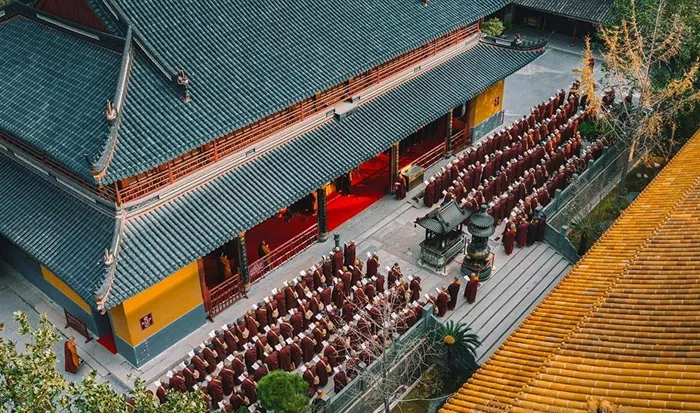Fayu Temple is one of the famous Buddhist temples in China. It is located on Mount Putuo, an island known for its spiritual importance in Chinese Buddhism. The temple is dedicated to Guanyin, the Bodhisattva of Compassion, who is highly respected in Buddhist practice.
This article will explore the history, unique temple architecture, and the cultural significance of Fayu Temple. It is written in simple language for easy understanding and highlights important aspects for those interested in Buddhist culture.
The History of Fayu Temple
Early Beginnings
Fayu Temple was first built during the Ming Dynasty in the early 15th century. The temple’s foundation is tied to the growing popularity of Mount Putuo as a sacred place for pilgrims and monks. Since then, it has been rebuilt and restored several times due to natural wear and wars.
The temple’s long history reflects the deep connection between Buddhism and Chinese culture. Over the centuries, it became a key place for worship and meditation, attracting believers from all over Asia.
Important Historical Events
During the Qing Dynasty, Fayu Temple saw its peak in both size and influence. Many emperors supported its development, and it became a center for Buddhist teaching and ceremonies. The temple housed many important Buddhist scriptures and statues, some of which remain to this day.
In modern times, Fayu Temple survived political changes and social upheaval, including the Cultural Revolution. Thanks to protection efforts, it continues to be a living spiritual center.
Temple Architecture of Fayu Temple
General Layout
Fayu Temple’s design follows traditional temple architecture principles common in Chinese Buddhist temples. It is built on uneven land on Mount Putuo, so its buildings rise step by step along the hillside, creating a graceful and natural harmony with the environment.
The temple is divided into several courtyards, halls, and towers, arranged along a central axis. Visitors enter through the main gate, passing through successive gates that symbolize stages of spiritual progress.
Main Halls and Structures
The most important building in Fayu Temple is the Great Compassion Hall. Here, a large statue of Guanyin is enshrined. The hall is decorated with colorful murals and intricate wood carvings that tell Buddhist stories.
Other significant buildings include:
- The Mahavira Hall, which houses statues of the Buddha and his disciples.
- The Sutra Library, where ancient Buddhist scriptures are kept.
- The Bell and Drum Towers, which are used to mark time for prayers and ceremonies.
Artistic Details
Fayu Temple’s architecture is notable for its elegant rooflines, painted beams, and stone carvings. The roofs have upward-curving corners, a style typical in Buddhist architecture, symbolizing a connection to the heavens.
The temple also features lotus flower decorations, which are important Buddhist symbols of purity and enlightenment. These artistic touches add beauty and meaning to the temple grounds.
Cultural Significance of Fayu Temple
Religious Importance
Fayu Temple is a major pilgrimage site for Buddhists, especially those devoted to Guanyin. The temple’s location on Mount Putuo makes it one of the four sacred mountains in Chinese Buddhism, each associated with a specific Bodhisattva.
Many visitors come to pray for compassion, healing, and protection. The temple holds regular rituals, chanting sessions, and festivals that bring the community together in shared faith.
Influence on Local Culture
The temple has influenced the culture and economy of the island and surrounding areas. It supports local arts such as calligraphy, sculpture, and traditional music used during ceremonies.
Festivals at Fayu Temple attract thousands of visitors, boosting tourism and helping preserve local traditions. The temple is not just a religious site but also a center for cultural exchange and education about Buddhist teachings.
Role in Buddhist Education
Fayu Temple also serves as a place for learning and study. Monks and nuns live there to practice meditation and study Buddhist texts. Many pilgrims come to receive teachings and guidance from resident monks.
The temple’s library holds important Buddhist scriptures, making it a valuable resource for scholars and practitioners alike.
Conclusion
Fayu Temple is much more than a beautiful building. It is a living symbol of Buddhist faith, history, and culture. Its unique buddhist architecture reflects deep spiritual meanings and Chinese artistic traditions. The temple’s history and cultural impact continue to inspire many people today.
Whether you visit as a pilgrim, a tourist, or a student of Buddhism, Fayu Temple offers a peaceful place for reflection and connection to a rich spiritual heritage.

